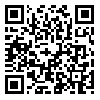Volume 4, Issue 3 (September 2025)
IJER 2025, 4(3): 0-0 |
Back to browse issues page
Download citation:
BibTeX | RIS | EndNote | Medlars | ProCite | Reference Manager | RefWorks
Send citation to:



BibTeX | RIS | EndNote | Medlars | ProCite | Reference Manager | RefWorks
Send citation to:
Fathi R, Hasan Seif M, Darvishi M, Liaghat M. (2025). The Path Analysis Model of Effective Factors to E-Learning Flow among Primary School Students. IJER. 4(3),
URL: http://ijer.hormozgan.ac.ir/article-1-439-en.html
URL: http://ijer.hormozgan.ac.ir/article-1-439-en.html
1- Material and Energy Research Center, Karaj, Iran
2- Department of Educational sciences, Payame Noor University, Tehran, Iran
3- MA in Student, Payame Noor University, Tehran, Iran
2- Department of Educational sciences, Payame Noor University, Tehran, Iran
3- MA in Student, Payame Noor University, Tehran, Iran
Abstract: (649 Views)
Objective: This study aimed to develop and test a path analysis model of effective factors contributing to e-learning flow. Specifically, it examined the roles of teaching presence, social presence, cognitive presence, perceived ease of use, computer self-efficacy, and motivation.
Methods: The statistical population included elementary school students in grades four to six. Using cluster sampling, 293 students were selected. Electronic lesson content was presented in class, followed by the administration of questionnaires related to the research variables. Data were analyzed using Pearson correlation coefficients and path analysis.
Results: Findings indicated that teaching presence had a direct and positive effect on social presence, cognitive presence, motivation, computer self-efficacy, and e-learning flow. Social presence directly and positively influenced perceived ease of use, motivation, and computer self-efficacy. Cognitive presence showed direct positive effects on motivation and e-learning flow. Motivation positively affected computer self-efficacy and e-learning flow. Finally, computer self-efficacy directly and positively influenced e-learning flow.
Conclusions: The results highlight the significant role of teaching, social, and cognitive presences, along with motivation and computer self-efficacy, in enhancing e-learning flow among elementary students. Future research is recommended to explore additional variables influencing e-learning flow across different age groups.
Methods: The statistical population included elementary school students in grades four to six. Using cluster sampling, 293 students were selected. Electronic lesson content was presented in class, followed by the administration of questionnaires related to the research variables. Data were analyzed using Pearson correlation coefficients and path analysis.
Results: Findings indicated that teaching presence had a direct and positive effect on social presence, cognitive presence, motivation, computer self-efficacy, and e-learning flow. Social presence directly and positively influenced perceived ease of use, motivation, and computer self-efficacy. Cognitive presence showed direct positive effects on motivation and e-learning flow. Motivation positively affected computer self-efficacy and e-learning flow. Finally, computer self-efficacy directly and positively influenced e-learning flow.
Conclusions: The results highlight the significant role of teaching, social, and cognitive presences, along with motivation and computer self-efficacy, in enhancing e-learning flow among elementary students. Future research is recommended to explore additional variables influencing e-learning flow across different age groups.
Keywords: E-learning flow, Motivation, Computer self-efficacy, Perceived ease of use, Teaching presence, Cognitive presence, Social presence
Type of Study: Original |
Subject:
Educational Studies
Received: 2025/04/30 | Accepted: 2025/07/24 | Published: 2025/09/1
Received: 2025/04/30 | Accepted: 2025/07/24 | Published: 2025/09/1
| Rights and permissions | |
 |
This work is licensed under the Creative Commons - Attribution 4.0 International. |






